| |
On an early Saturday morning, the historical town of Holetown begins to stir. Located on the West Coast of Barbados, Holetown faces the calm Caribbean Sea. Although an overcast morning, it did not diminish the beauty and tranquil experience of an early morning sunrise on a serene beach. s
An Unexpected Encounter
While walking along the beach we had a chance encounter with a visitor to the island, who in an effort to try and get our attention, was holding up his cupped hands towards us. As he opened up the palm of his hands, he revealed to us a lone, infant Hawksbill turtle. He explained he had just rescued the turtle from a crab which preyed on it and was dragging the turtle into its burrow.
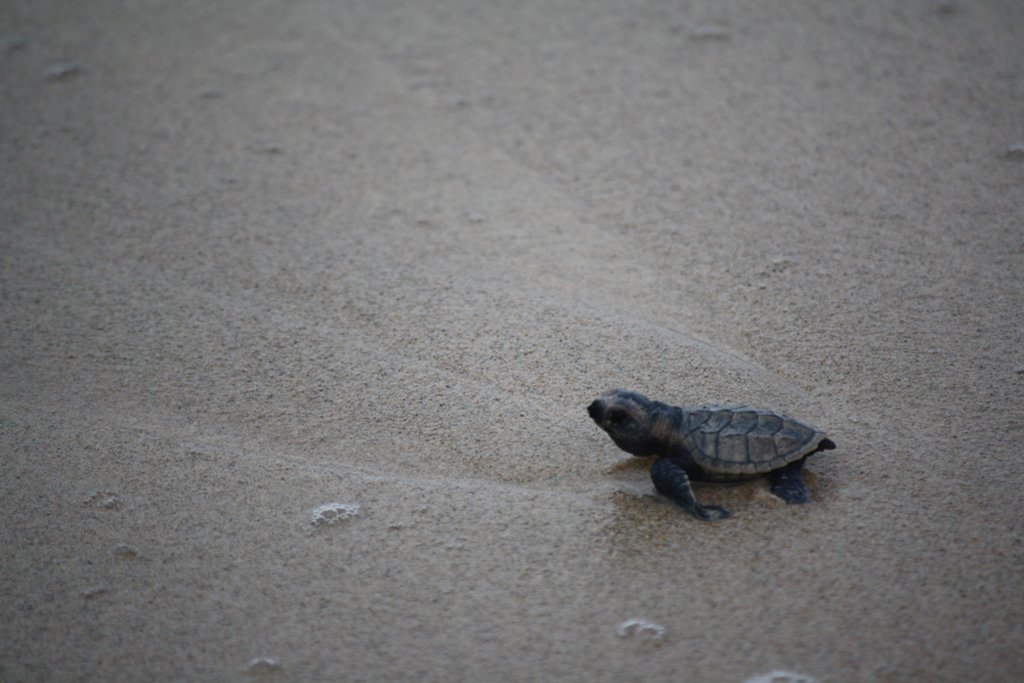
After hatching and leaving its nest chamber to make its way into the ocean as hatchling sea turtles instinctively do, somehow this young turtle became estranged from its bale.
The visitor set the young Hawksbill turtle down on the seashore for it to begin its journey into the sea. While infant sea turtles are generally vulnerable, in comparison with the hatchlings we saw in the previous month, this turtle was visibly timid, feeble and traumatised.
Furthermore, the currents were not moving in the turtle's favour and would not draw it into the ocean, but would rather push it back on to the shore.
To make matters worse for the struggling turtle, it had an additional battle with another predator: a sea cockroach.
|
|
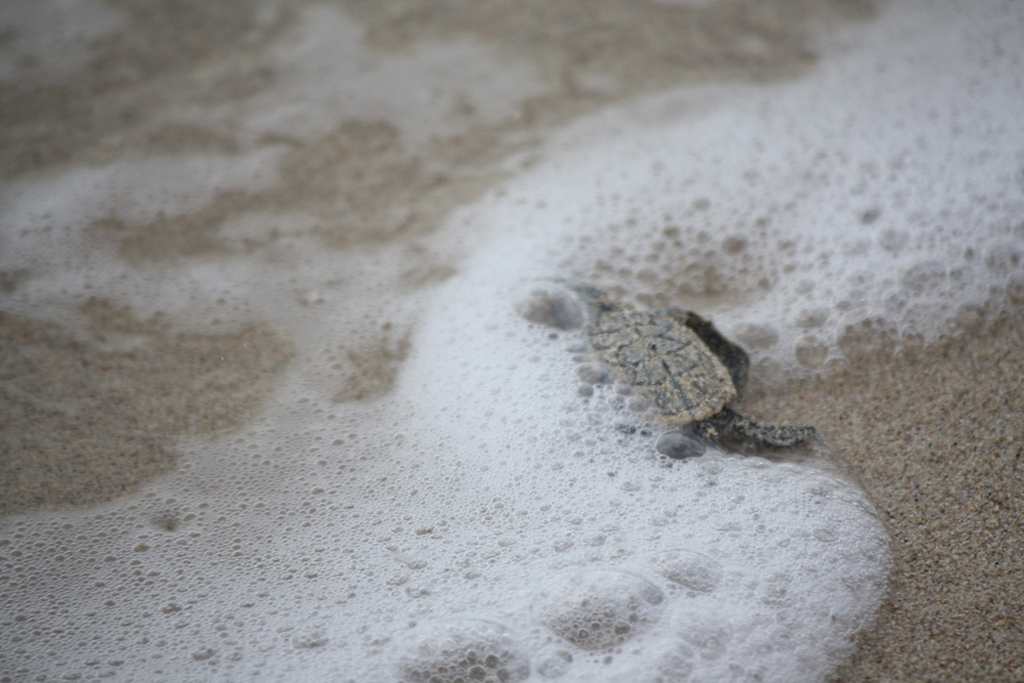
Often used for bait, a sea cockroach is in fact a small white, crab which bears resemblance to a cockroach. The tide often pushes sea cockroaches out to shore and very quickly, they burrow and sink into the wet sand when the tide goes back out.
Although the sea cockroach is smaller in size than the infant turtle, it took the advantage of the sweeping, outgoing tide entangling itself with the turtle we suspect not by accident, but in an effort to make a meal out of the vulnerable hatchling. Fortunately for the turtle, the sea cockroach's attempt was unsuccessful.
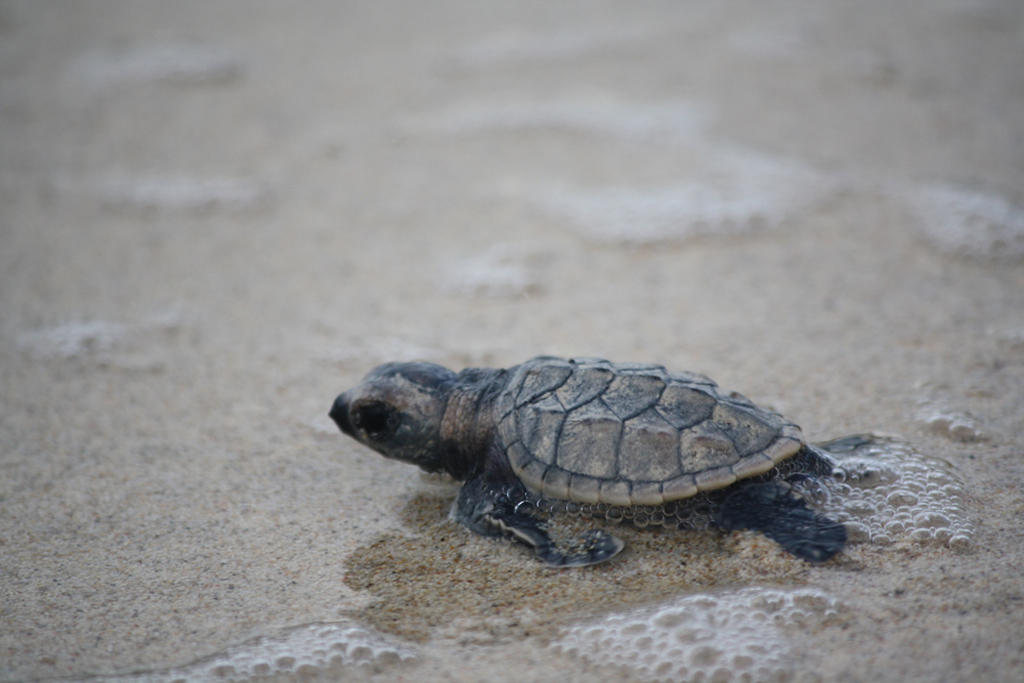
How Many Lives Does a Hawksbill Turtle Have?
Although we do not know when the infant turtle hatched, how long it remained on the sands and what it previously endured before being rescued by the visitor, the young turtle's experience reinforces that the crossing from the nest chamber to the ocean is dangerous for hatchlings. The |
|
disruption in this crossing caused the turtle to separate from its bale, left it disoriented as well as susceptible to dangerous encounters with predators.
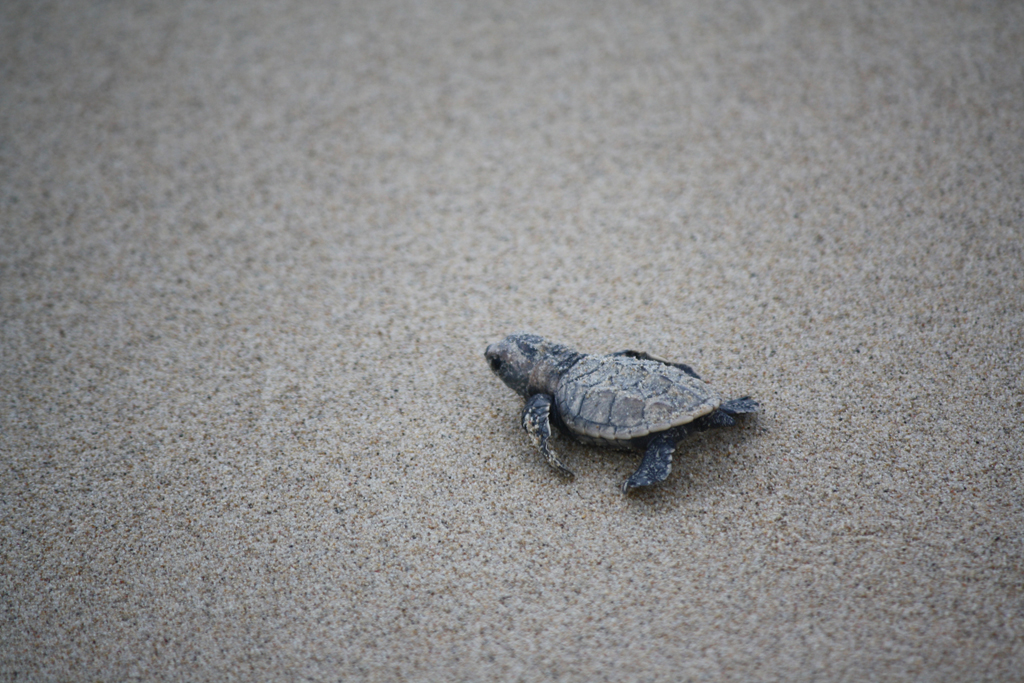
Judging from the infant, hatchlings which are separated from their bale and survive their encounters with predators become traumatised.
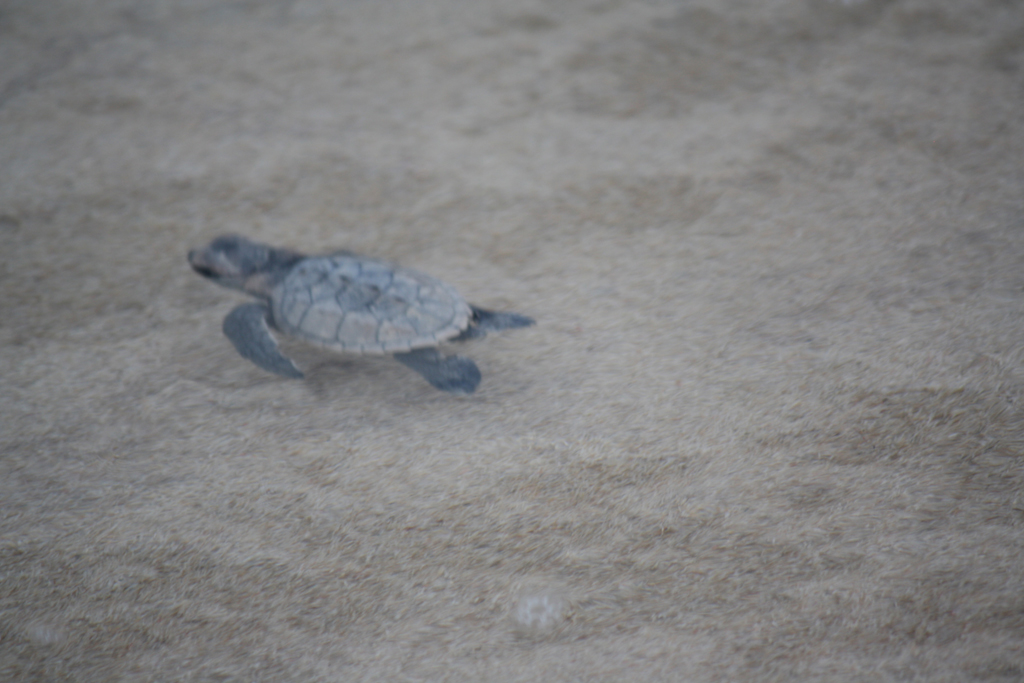
Eventually, we did see the young turtle making it out to sea. Although Hawksbill turtles hatchlings generally have a low survival rate, due to the trauma this turtle experienced, its survival looked unlikely and we can only hope that it left its misfortunes on shore and good luck continues to be on its side.
Related Articles:
September 2015: An Evening Run With Turtles
August 2015: A Moonlit Walk with Turtles
|
|
|
| |
It is a bright, sunny Sunday morning: The sky is clear from any haze and in contrast to the weekly grind, there is no schedule, no one to meet and no time restrictions. These days, relaxation has become a luxury.
Looking forward to a leisurely moment, we try to decide how we how we will be spending our time at the beach. Are we going for a run on the white sands, or will we go for a refreshing swim in the inviting blue waters?
On our arrival, we take off our shoes head over to the welcoming ocean which we enjoy so much.
Then it stops us... in our tracks: A barricade of decomposing Sargassum Seaweed. Its unsightliness is matched only by its stench.
This is a disappointment we have experienced multiple times this year.
What is it?
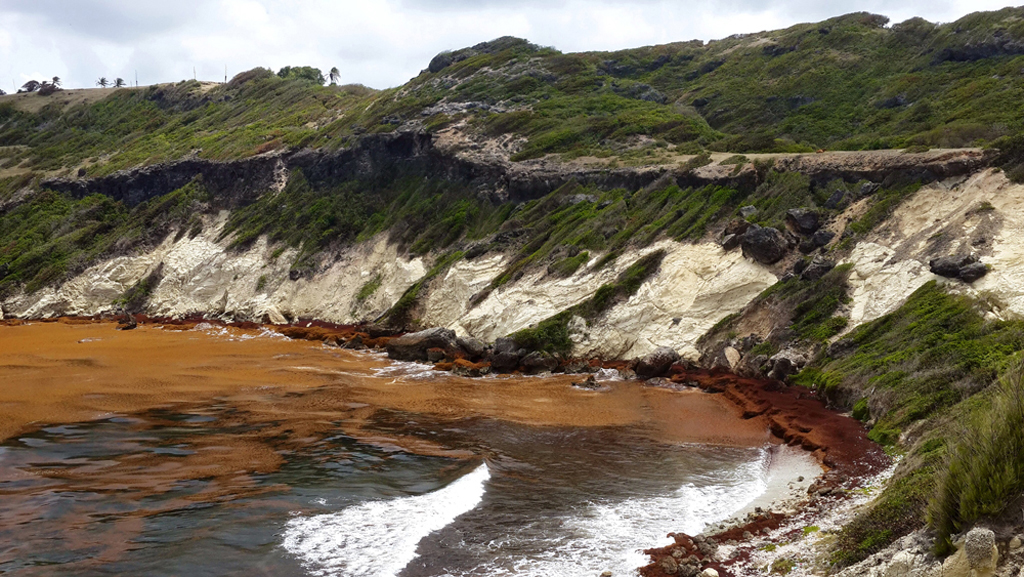
This marine plant is made up of jagged stalks with straggly, leafy strands of weed. It is pale olive-green with hues of reddish-brown. Multiple stalks of the weed come together to form large bands and with the aid of small air-filled sacks (which also form part of the plant), the seaweed floats on the ocean water.
Sargassum Seaweed is not a new discovery and for the most part, is generally not directly harmful to humans, wildlife or the environment.
In the Americas, Sargassum Seaweed is said to originate from the Sargasso Sea, located in the North Atlantic Ocean.
When the seaweed is washed ashore and begins decomposing a strong, offensive odour is emitted. As it decays and ultimately disintegrates, it undergoes a metamorphosis: from the fresh green and red hues as described above, it turns a rusty brown, to a dark brown to almost black in colour. Additionally, as it dries, its texture becomes more rough and brittle.
But what's all the fuss about?
What has made this seemingly ordinary marine plant extraordinary is that in recent years (more so this year) it has been reproducing at an exceedingly rapid rate, travelling across the ocean and coming awash on shores in overwhelmingly large masses. In fact, "overwhelmingly large masses" is an understatement.
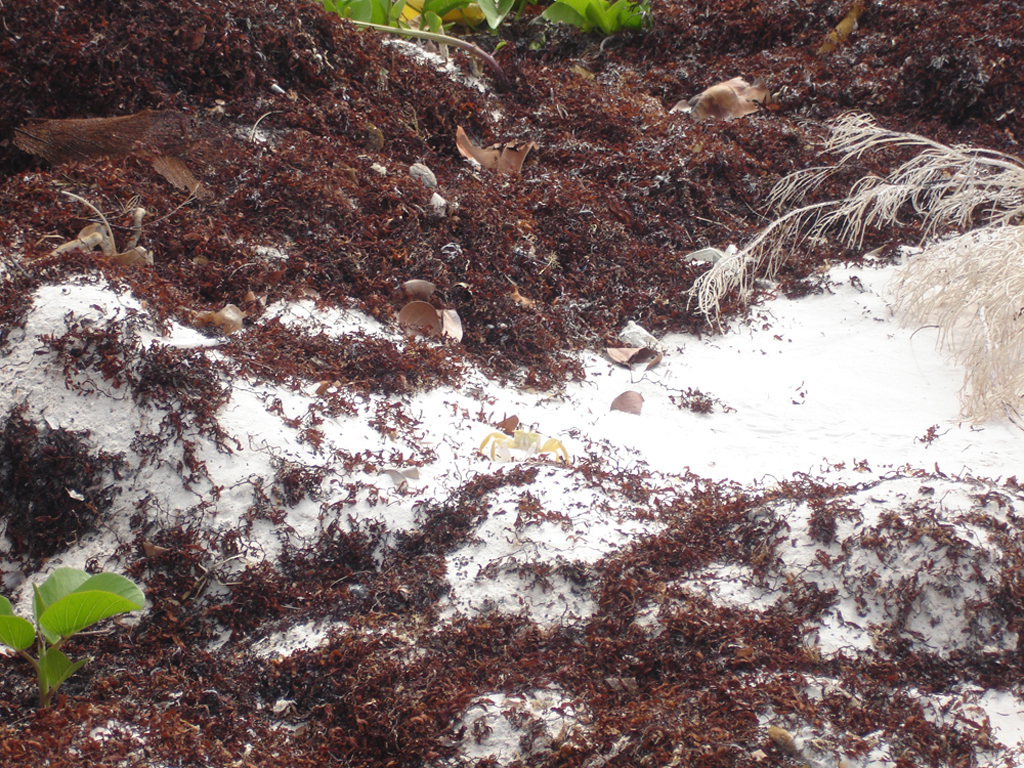
One of the ways to understand and fathom the scale of the effect this phenomenal change in the environment has brought about, is to examine the direct impact it has on human activity and the wildlife.
Effect on Human Activity
This year the Caribbean, Mexico, the United States of America and other parts of the
|
|
world have been heavily impacted by the arrival of the seaweed.
So great is its growth and spread that when flying over or viewing the ocean (even at a distance), the immense patches can be seen looming on the waters.
When it arrives closer to the shore the shallow waters becomes thick with the seaweed and the incoming tide resembles a bog.
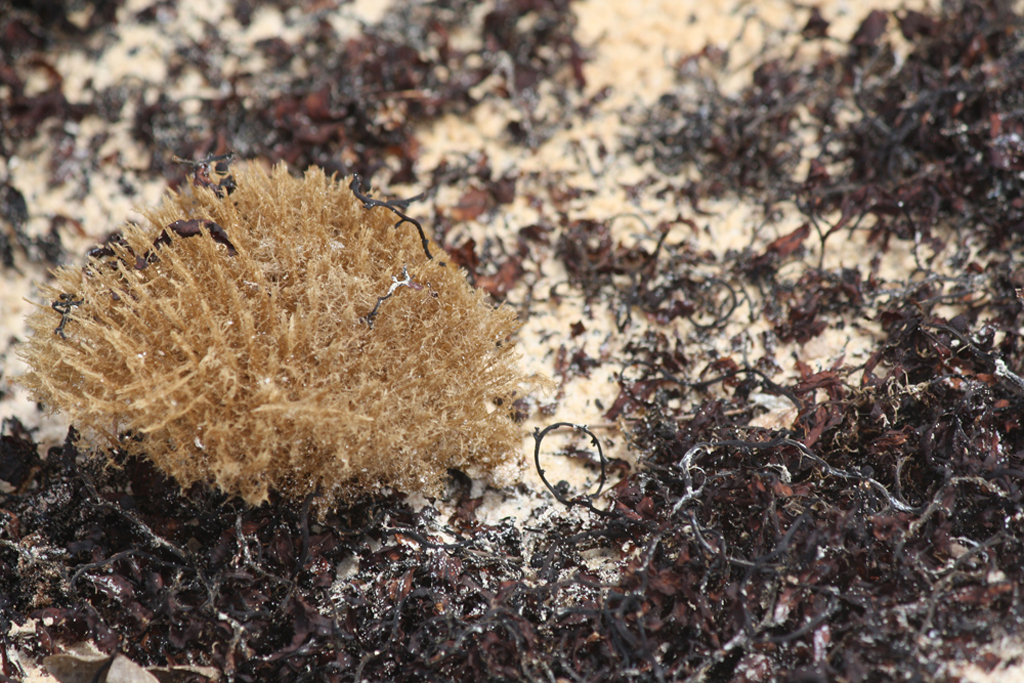
Many of the Caribbean countries are not well equipped to deal with the overflow of the seaweed. Whether in the water, or washed ashore, the seaweed makes recreation on or near the beach uncomfortable if not impossible.
In Barbados, the usually welcoming beaches become almost unrecognisable as the beautiful aqua-blue waters become stained a mossy green-brown, while the white sand is heavily dominated by the decomposing seaweed.
The tourism and hospitality industries were heavily hit, as many hotels, restaurants, beachfront accommodations (as well as residential homes) and water-sport activities are located on and near the beach. While there were public community cleanup efforts in place, some businesses also privately invested in clearing the beaches of the seaweed. Mounds of the seaweed reaching several feet high were compiled on the beaches.
On the other hand, taking a creative approach, there are many reports of enterprising individuals and companies (both within and external to the Caribbean region) capitalising on the situation and experimenting with uses of the seaweed, for instance, as an ingredient in food and beverages. It is also said to be an excellent plant fertilizer. Furthermore, the fishing industry flourished, as the seaweed is an attractive source of food for fish.
Effects on Wildlife
Just like humans, the wildlife also has to contend with this new change in the environment and furthermore, their immediate survival is at stake.
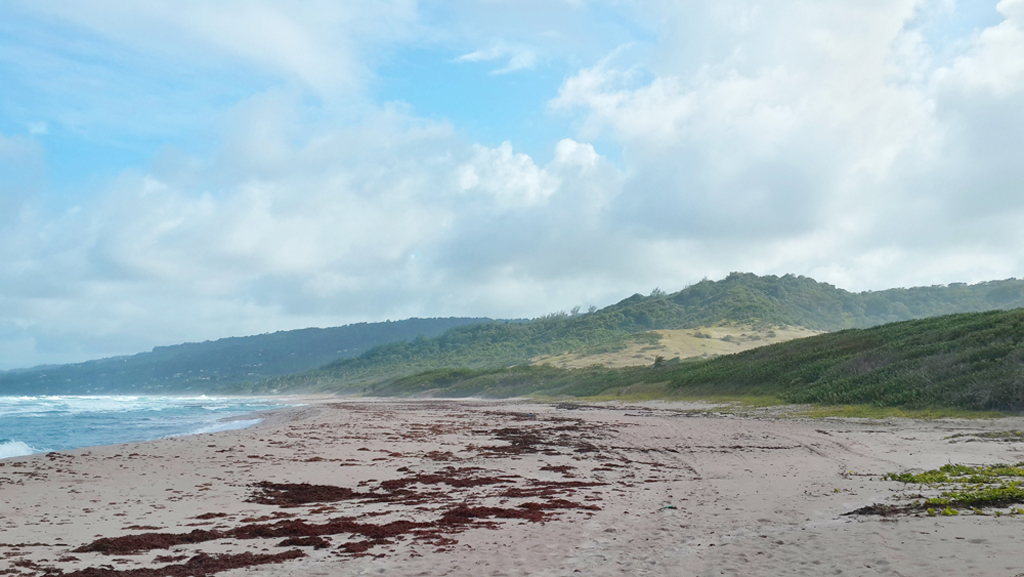
As with the effect on human activity, the seaweed has both positive and negative effects on wildlife. Some of the reports and my observations on the effects of the seaweed on marine and coastal life are as follows:
Marine life, such as plants, fish and sea urchins are susceptible to becoming entangled in the thick mass of seaweed. As a result, they get washed ashore with the seaweed where they are unable to thrive or survive.
There have also been reports of the seaweed entrapping sea turtles in the water, prohibiting them from breaking the water’s |
|
surface for air.
It has further been reported, when the seaweed forms thick barrier on the beach it obstructs hatchling turtles from making their
way into the ocean.
This in turn hinders the hatchlings' survival, as they become more susceptible to predators and they are unable to survive outside the sea water for an extended period of time.
Additionally, as a result of cleanup efforts taking place on the beach, machinery such as loaders, which scoop up the seaweed and underlying sand, are utilised to clear the beaches. However, as Atlantic Ghost crabs create burrows in the sand, their homes are disrupted.
As the influx of the seaweed has decreased as the year has progressed, it is encouraging to find Atlantic Ghost crab burrows sprinkled across the beach once again.
Although the impact of the seaweed has been devastating, it has also proven to be an attractive food source for marine and costal wildlife.
As mentioned, recently in Barbados, there were reports of an increase in fish as they were drawn to the seaweed as a source of food and this in turn positively impacted the fishing industry. Sea turtles are also said to consume the seaweed.
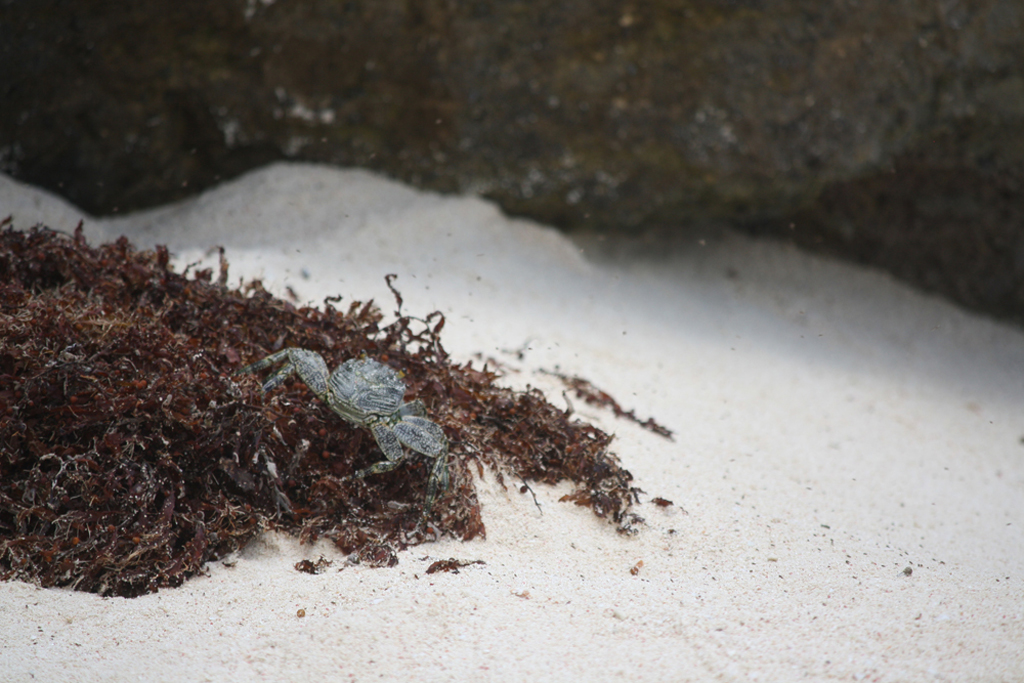
I have recently observed more sandpiper birds on the beach as they also feed on the seaweed and presumably the tiny insects which the seaweed attracts during the decomposition stage when on shore.
Reminded of the fairytale, “The Magic Porridge Pot,” Sally Lightfoot crabs which inhabit the rocky areas of the beach have had their homes overrun with seaweed. Using their front claws almost like utensils, they consume the seaweed.
What Next?
Not fully understood, there are many theories as to the sudden and overpowering increase in the seaweed reproduction.
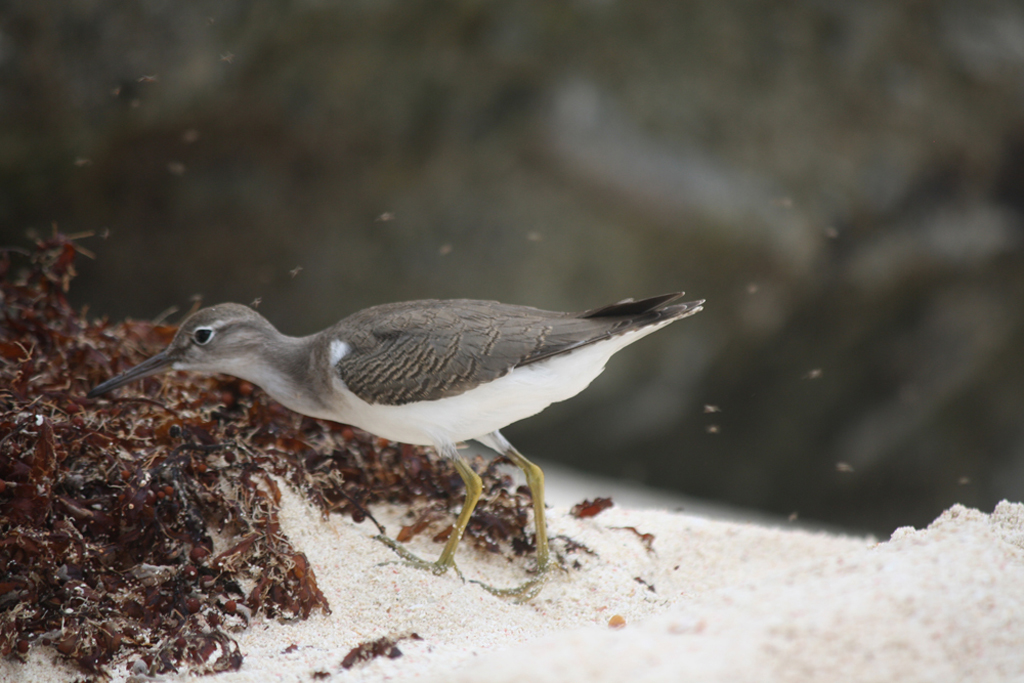
Some theories point to global warming, while others attribute it to a repercussion of the British Petroleum oil spill in the Gulf of Mexico in 2010. Furthermore, while it is said to be originating from the Sargasso Sea, there are speculations there could be other sources of the seaweed in the Atlantic Ocean, such as the Gulf of Mexico or even as far as Africa.
However, there is no conclusive theory reported explaining the mass reproduction of the Sargassum Seaweed.
As a result, it is uncertain if this change in the environment is a permanent one to which we have to adapt. The silent, yet active mass of Sargassum Seaweed has proven it is a force to be reckoned with. |
|
|
| |
On a beautiful, tranquil evening, what was planned to be a brief jog on the beach turned out to be a thrilling wildlife experience.
While the evening was sunny, there were some rain clouds looming in the skies. The atmosphere at the beach was calm and the waters were alluring.
Nearing the end of our run, at approximately 5:25 p.m., we were forced to slow down due to a barricade of people positioned in the middle of the beach.
Something was happening, but what?
As my eyes fell on the sand, I suddenly became aware of what was transpiring: dozens of infant Hawksbill turtles had just hatched and were making their way from their nest chamber, across the sand and towards the ocean.
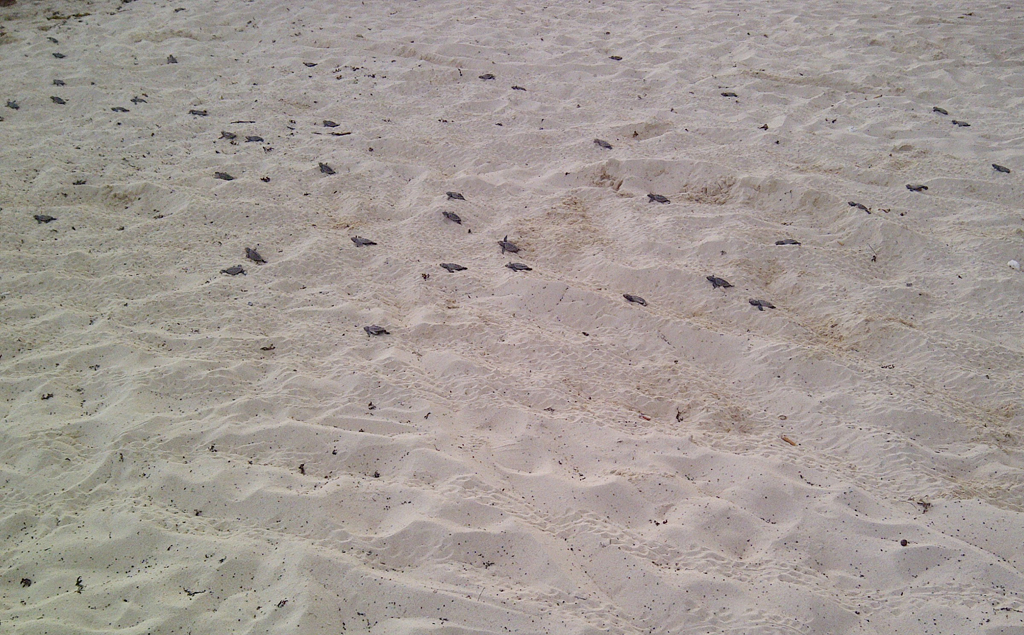
A Difficult Journey
Hawksbill turtles are marine animals which are born on land. Once they hatch their goal is to make it into the sea.
While the successful crossing from their nest into the ocean is critical, it is only a part of their battle for survival. At the embryonic stage onwards, their lives are in constant danger. They are plagued with many challenges, such as susceptibility to predators, human activity and environmental changes.
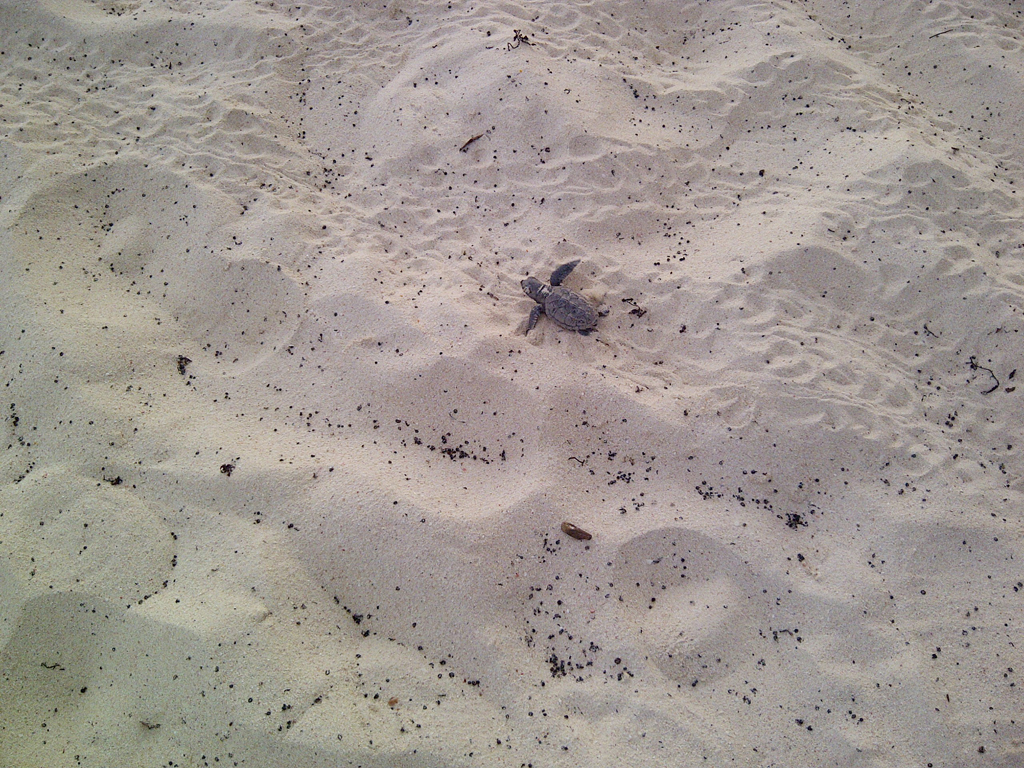
|
|
As Hawksbill turtles are a critically endangered species, it was amazing to watch the clumsy newly born turtles activate their mechanical, yet natural survival instincts and safely navigate their way into the ocean.
As they used their flipper-like legs to push through the heavy grooves in the sand, it was evident that their journey from their nest to the ocean is not an easy one. Even manoeuvring through a footprint presents a challenge to them, but the tiny creatures persevere.
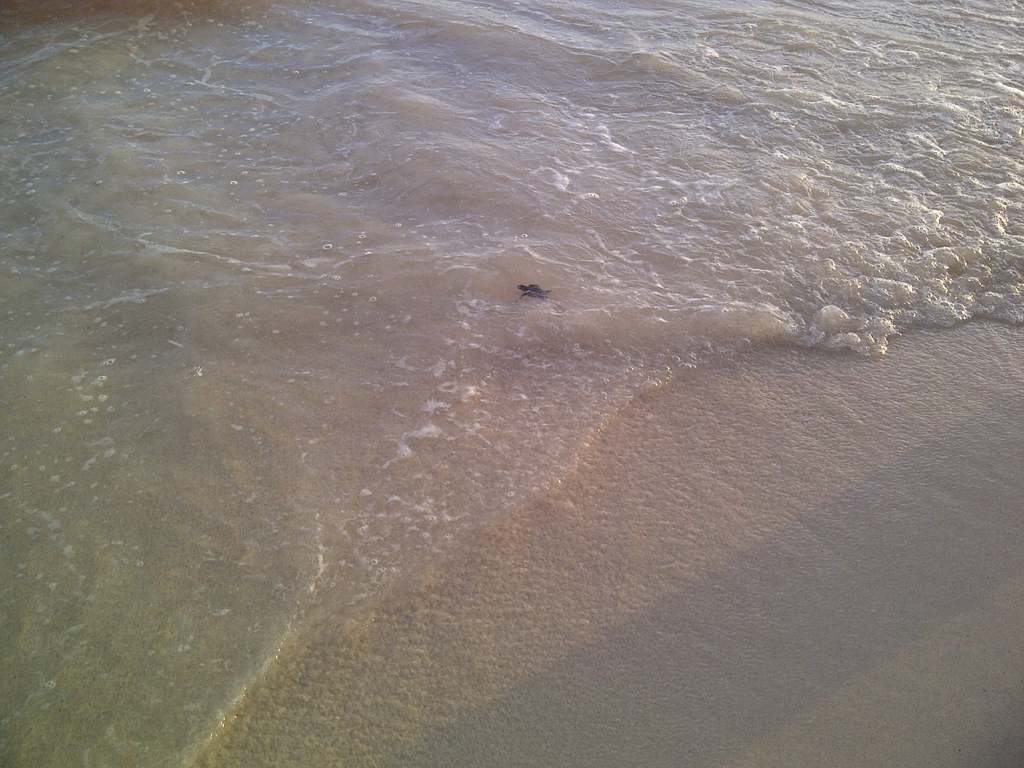
Fortunately, in this instance there were no major or threatening obstacles which the hatchlings potentially face.
For starters, the beach was clear of any litter or large patches of Sargassum seaweed.
Furthermore, light pollution often misdirects hatchlings away from the sea, but as it was still daylight they could find their way into the ocean.
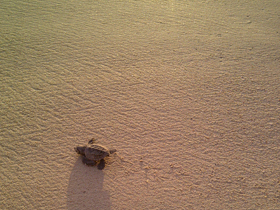
Additionally, the group of people which were gathered to watch the event would have offered the turtles guidance and assistance and served as protection. Our presence would have been a deterrent to any predators (such as crabs), giving the young turtles a safe head start into the ocean.
When the infants reached the shore, the tide would carelessly toss some them back on to the beach or sweep them into the |
|
ocean, where they begin their swim against the waves and currents.
Back in full circle
Aware of the low survival rate of Hawksbill hatchlings, while watching these vulnerable creatures venture into the vast ocean one can only hope the seas will be kind to them.
After about 20 - 30 years when they are sexually mature and ready to lay their own eggs, female Hawksbill turtles will return to do so, on the same beach on which they were born.
It will be a long time before the females in the bale we saw return, if any at all.
Just as I will never forget the experience of sighting the adult female Hawksbill turtle which came to shore to find a nesting spot, I am now fortunate enough to be left with the memories of another part of the endangered Hawksbill turtle life cycle. Despite our concern for the hatchlings, our evening turned out to be truly remarkable.
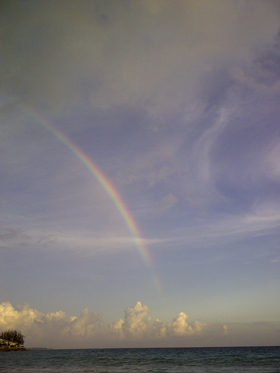
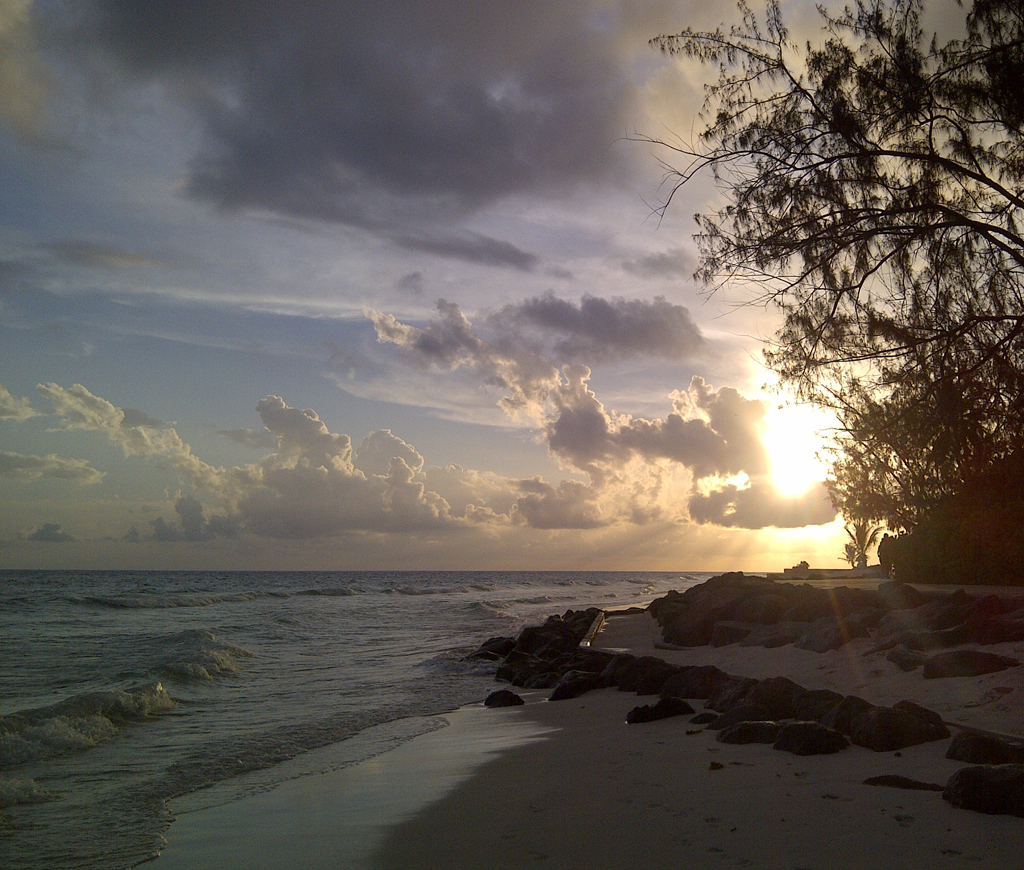
Related Article:
August 2015: A Moonlit Walk with Turtles |
|
|
| |
The blackbird warning signal - a series of short, quick chirps I have grown familiar with.
Believing this particular sound was a topic I had explored in depth (and feeling accomplished for learning a little of the blackbird language), lately the blackbirds have proven there is more to be understood about the ways in which they communicate.
While the series of chirps do signal a potential threat in their vicinity, I had previously noticed a single blackbird emitting the call and speculated that it was perhaps protecting its nest.
Giving more insight to the various uses of the danger signal, this month I witnessed a blackbird emitting the call, signalling it was under attack, as it was being pursued by a king bird.
Community Spirit
Over the past few weeks, I have also noticed their alarm has additionally been used as a communal warning. If an entire flock is agitated a joint alert (made up of all the blackbirds in the flock making the danger signal), can be heard in the trees. On some occasions I have heard the short chirps penetrated by a wailing cry.
The Tale of the Blackbirds and the Monkeys
While I have observed the communal danger call over a period of time, it has clearly been demonstrated on two separate, |
|
but similar instances when a monkey has entered the vicinity.
I had only seen the monkeys briefly, but I knew they were nearby due to the prudent blackbirds' alert.
In these instances, a blackbird started the series of chirps. As the monkey wandered from garden to garden, back and forth multiple chirps were heard, accompanied by the high pitched cry. The communal chirps and wail eventually faded, but a single blackbird kept going until it felt a sense of safety.
More questions than answers
There are times when the reason behind the blackbirds' warning signal seems clear. However, the blackbirds' usage of the danger call over the past few weeks has left me with more questions than answers, such as do blackbirds really have a strong sense of empathy and community? While I have seen them retire in trees together, during the day they venture independently.
Furthermore, is the sometimes accompanying wailing sound used when sensing an extreme threat? Do they have different degrees of threats and issue their alert accordingly? Why didn't other blackbirds respond to the call on the other occasions, or was the single blackbird trying convey to the culprits that they were getting too close for comfort? Are there individual and communal alerts?
|
|
As I continue to discover the meaning behind blackbird calls and their communication methods, I realise there is more to uncover than what I had initially thought.
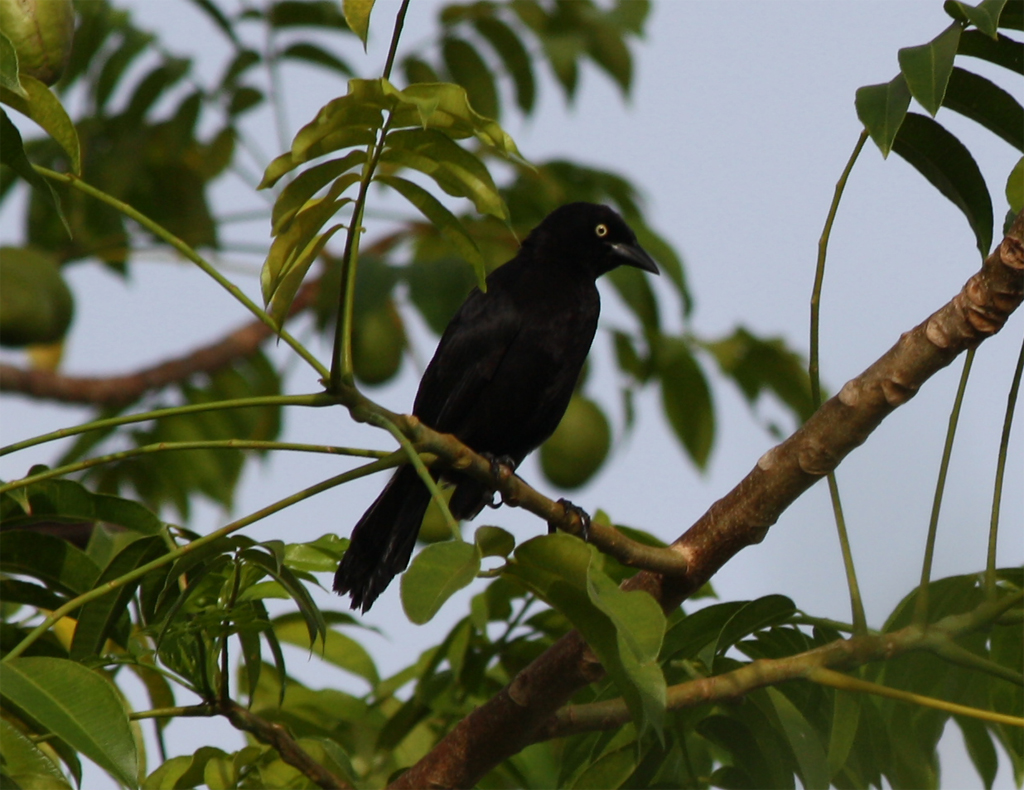
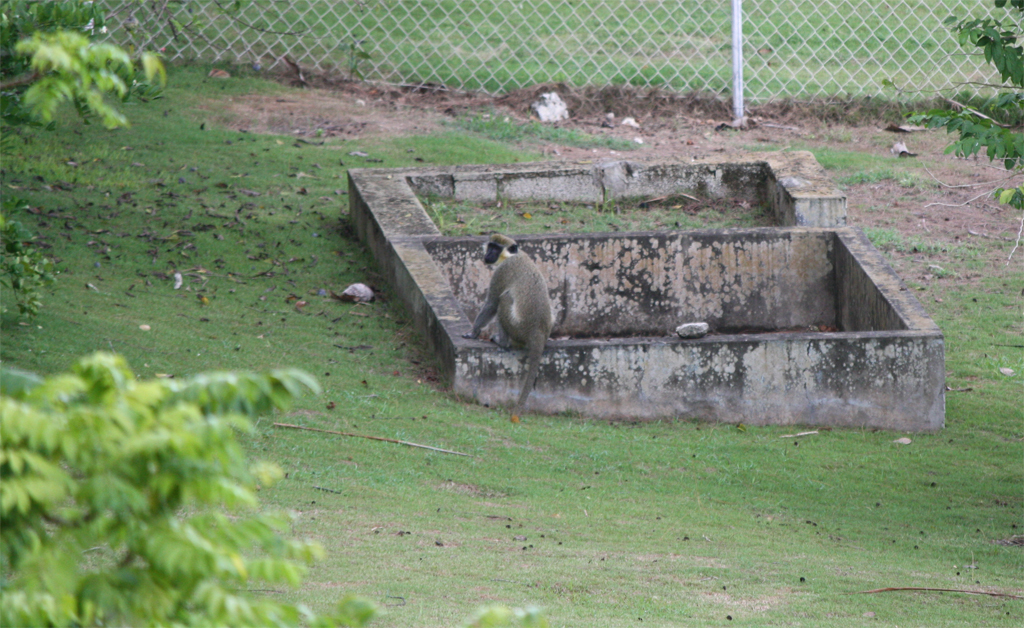
Related Article:
August 2015: Blackbirds: Danger!
|
|
|
| |
Sweltering hot and humid describes the months of April and May in Barbados. There can be days with no rain. As the scorching sun beats down on the land, plants turn brown and brittle and the earth becomes parched.
Fortunately, June brings the start of the rainy season. Though unpredictable, showers of rain rejuvenate the earth and within a few days stretches of worn, dry grass begin to show signs of greenery.
June also brings the start of mango season.
What does that mean?
The sweet tropical fruit enjoyed by many, is seasonal and becomes plentiful at this time of year. There are many types of mangoes ranging from tender and sweet, to fibrous and sour. Each type can be used and enjoyed in many different dishes or just on their own. Can you imagine eating a cold, sweet mango on a hot summer’s night?
As I observe the wildlife in my garden, I notice the mango trees have become a hub of activity for some species. Mangoes are not only important to us, they are important to the wildlife as well.
Once the mangoes ripen, it is mayhem. Aggressive calls can be heard and animals drive each other away, committed to guarding what they have claimed for themselves.
Have a look at what mango season can stir up in the garden...
Birds – Blackbirds, Scaly Naped Pigeons Sparrows, Yellow Breasted Birds
Loud, crowded, plenty of food, ruffled feathers and some scuffles. Lots of scuffles. A rowdy pub for birds; on reflection, this is what mango season brings to mind.
While each species of bird has their own unique qualities, some of the techniques they use in gaining their fair share of fruit are similar.
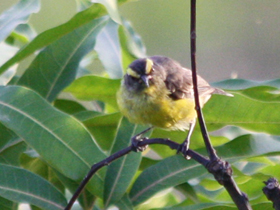
Blackbirds, Sparrows and Yellow Breasted birds will either eat a mango which has fallen on to the grass or one which is hanging from a thick stem. They use their claws to skilfully hook on to the stalk and/or the fruit itself.
Sparrows and Yellow Breasted birds are especially agile when manoeuvring around a mango, which often grows to be larger than the bird itself.
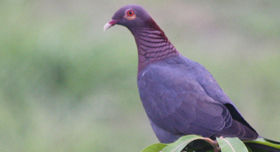
The larger Scaly Naped pigeons on the other hand, do not have the same agility as the smaller birds. This season, I have only seen them feeding on fallen mangoes (although that may not always necessarily be the case).
After eating an untidy meal, the various types of birds clean their beaks on branches.
Are we going to get along?
Generally, the various species of birds on the island live harmoniously with each other and regularly peacefully hunt and feed together.
However, there are also times they get hostile when it comes to defending their meals. |
|
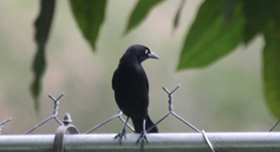
They are mainly aggressive towards birds of their own type, but use their size to intimidate birds smaller than themselves.
Small and spunky, sparrows are the most active and combative of the birds which frequent the mango tree. What they lack in size, they make up for in personality.
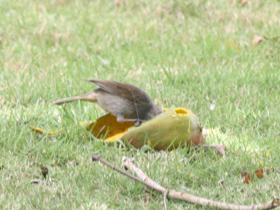
Sparrows have a “no sharing” policy and these feisty birds are very territorial with their find. In an effort to guard their stake, they attack the other sparrows which dare try to get a share.
During mango season, there is an increase in their already frequent aggressive calls and combats.
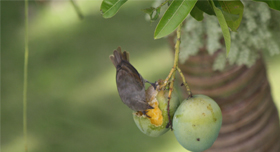
First come, first ser... Who are we kidding? It's a Mongoose!
Looking out of my window, my eye catches a movement... it's there again... and it goes... will I see it again, or did it disappear into the greenery? These are the games the mongoose plays.
I also see a Scaly Naped pigeon peacefully eating a mango. Unknown to it, a mongoose with a malicious goal in mind is quickly and stealthily moving across the garden.
Suddenly, there is an odd hiss and the desperate flapping of wings.
The Scaly Naped pigeon is nowhere in sight and is now replaced by the scheming mongoose greedily feasting on the mango. The mongoose shiftily looks around, adding to its already suspicious demeanour.
It had its fill, but it will be back.
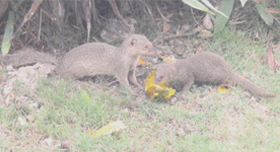
Looking up at an out of reach, succulent mango is torturous for a mongoose. When the ripe fruit finally falls to the ground, the mongoose will devour it with its teeth and claws, tearing through the outer skin into the tender flesh. It is only willing to share its find with its offspring, which shadows it.
Monkeys
From my window, I stare at her. She stares back.
It took a split second for her to realise I was watching. Sitting on her hind legs peacefully enjoying her meal, her infant was
clasping unshakably to her abdomen, as
though it was an extension of her body.
I had interrupted her.
|
|
Determined that the fruit is hers, she makes her escape on all fours.
Or so I thought. She runs in front of me, rather than in the opposite direction. That’s a strange thing to do for an animal which is supposed to be fleeing in fear.
She’s not escaping yet. She’s retrieving more of her find. From a bush, she pulls out another fruit she had stored, crosses in front of me again and then flees.
What just happened?
Was she really afraid? Did she run because she just got caught? Or did she just not want to be disturbed? Either way, my questioning her actions makes me realise she has challenged our hierarchy: she did not only use her instinct, she made a calculated judgement.
That was one of my encounters with a monkey this mango season.
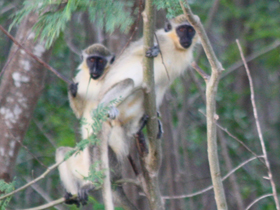
An urgent rustling of trees, a carelessly discarded chewed mango seed, a rumbling on the roof are all signs of sharing the vicinity with monkeys. Their agility second to none - quickly and fearlessly, they bound, swing and spring on branches. They are born acrobats.
Monkeys are notorious for stealing and destroying crops. They are also infamous for being vindictive towards humans and I am apprehensive about how I approach them.
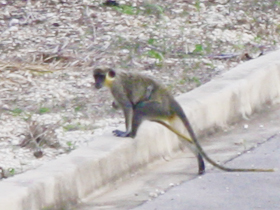
I realise from my brief encounters with monkeys this mango season, their defiant demeanour appears as though they are deliberately rebellious, rather than simply trying to survive. Living in nearby clumps of trees with undergrowth, it is not hard to see that these unconventional animals are not always so animal-like.
Until next year...
The trees in my garden have finished producing their crop for this year. While birds and other wildlife still frequent the garden and there is still plenty of activity, when I go by the mango trees I cannot help but notice the calmness. As I reflect on this year's mango season, everything is back to normal, and normal suddenly feels a bit too still.
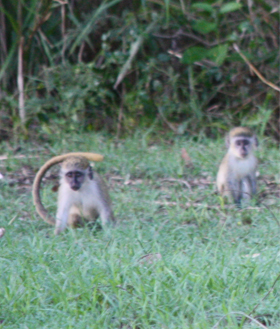
|
|
|
| |
On this beautiful night, the full moon was struggling to illuminate the sky. It was losing at a game of tug-of-war with the dominating, looming rain clouds.
The beach takes on a very different appearance at night. The usual brilliant sky, inviting blue waters and white sands were now cloaked in a mysterious darkness. In its place was a milky, midnight blue sky and the dark, inky waters sparkled with the reflections of distant lights and the dull glow of the moon. Earlier rains had made the sand thick and grainy underneath our feet.
So, what were we doing on the beach on such a rainy night?
We had decided to take a guided Turtle Walk organised by the Barbados Museum and Historical Society in collaboration with the Barbados Sea Turtle Project, a sea turtle conservation and scientific institution. In order raise awareness of the habits of sea turtles, these organisations occasionally invite the public on educational walks and the opportunity to (hopefully) sight nesting and hatching sea turtles.
It was still early when some members of the group found broken hatchling shells on the beach. Although not as exciting as seeing the infants themselves, it was a start.
As we walked along the beach and adjoining boardwalk, drizzles turned into light showers, light showers turned into heavy rain and heavy rain turned into torrents. We were drenched. We took cover, but our shelter was no match against the turbulent winds which would sometimes tease us by blowing the heavy rains in our direction.
We hadn't even seen one turtle as yet, but if the rain wasn't going to deter the turtles, it |
|
wasn't going to deter us.
Eventually, the now disjointed group reconvened at a point a female Hawksbill turtle was expected to come to shore.
We didn't have to wait long for her to make her appearance.
There she was... slowly making her way up the sloping beach, her silhouette disguising her as one of the surrounding rocks and her wet shell glistening in the moonlight.
The professionals leading the group gave us an early indication that she would be returning to the ocean.
She was on a "dry run," which means she comes to shore in search of a suitable place to nest. As the spot she found was not appropriate, she would go back to sea and later return to a nearby section of the beach to continue her search.
The Sargassum seaweed, rocks and a wall (the biggest obstacle) were constricting the space on the beach and it was not ideal for her to nest too close to the shore. Hawksbill turtles typically lay their eggs on higher, drier levels of the beach.
Before she could return to the ocean, the professionals wanted to "tag" her, so they could keep track of who she was. She was not happy being held down (apparently she already had 2 tags on her). As they flashed a small red light on her, I briefly saw her face. She was struggling for her freedom. As soon as they released her, she quickly... very quickly (who said turtles were slow?) returned to the ocean.
Though a short visit, we were thrilled. She was beautiful. |
|
Why Barbados?
While some countries offer the attraction of "swimming with dolphins," Barbados offers "swimming with turtles." The island provides the perfect sand composition and temperatures for Hawksbill turtles (and other sea turtle species) to nest. In fact, it is the second largest nesting site for Hawksbill turtles in the Caribbean.
After the Hawksbill turtles hatch, the infants sense the chemical composition of the sand on the beach. Furthermore, they are in tune with the magnetic field surrounding the country. When they are ready to nest, they are able return to the beach which they left as hatchlings, now as adults searching for the ideal site to lay their own eggs.
Critically Endangered
Hawksbill turtles are critically endangered, which means 90% of their population has been eradicated.
There are many factors which contribute to their dwindling population, such as low hatchling survival rates, slow reproduction rates, poaching, pollution, human activity and changes in the environment. Furthermore, it puts into perspective how invaluable each of these turtles is.
The walk was a truly amazing experience. I will never forget the lone female Hawksbill turtle silently searching for a place to nest and disappearing into the night waters.
I am already preparing myself for the next Turtle Walk, where I hope to see some hatchlings (I will take an umbrella this time, but let's see how useful it will be!). |
|
|
| |
As August is my Dad’s birth month, I thought I would dedicate this post to his contribution to the birds in our area.
Over the past 40 years, he has been feeding birds every morning with special feed he purchases for them. The birds have become so accustomed to him that they wait for him every morning. They will go as far as to tap on the windows when he is late. When they finally see or hear him coming outside with their feed, they start to get ready for the feeding frenzy. He recently mentioned that one bird walks alongside him as he makes his way to the spot where he feeds them. He also reported that the blackbirds are pushed aside due to their smaller size in comparison to the wood doves. Therefore, the clever blackbirds have indicated that they would like to be fed |
|
first - by standing a little ways off from the feeding spot. Dad feeds them separately before continuing on to the other birds.
Furthermore, he has birdbaths installed, so that the birds have a place to bathe and drink water. While they frequent our birdbaths throughout the year, it becomes especially useful to them during the dry, hot months when it doesn’t rain for days.
Dad has also planted ferns around the house, with the intention of having birds build their nests in them.
Believing that animals have a right to freedom, he wanted to have pets without having them caged, and this was how he went about it. I would also like to take this opportunity to |
|
add that August is also my sister’s birth month. She also loves wildlife, is very sensitive to animals and insects and is my Dad’s second in command when he is not available to feed the birds.
Best wishes, to these creative and inspirational nature lovers!
|
|
|
| |
The Warning Signal...
When driving in Barbados, there are certain, basic signals drivers use to communicate with each other. For example, flashing lights are an extended courtesy to allow another driver in front of you and a brief honk of the horn is a "thank you".
I liken the language of birds to this type of communication - codes and symbols.
In the month of August 2015, I have observed on occasion the warning signal of a blackbird.
A short and consistent chirp, while keeping a watchful eye, the blackbird never seems to tire until it feels safe.
The Tale of the Blackbird and the Cat
On the bright, beautiful morning of 17 August 2015, I heard the blackbird raising its alarm.
On closer examination, I saw the bird chirping at a cat standing on the road way. Additionally, wherever the cat would go, the blackbird would follow it, safely flying from branch to branch, out of reach from its predator.
For a cat sneaking around, trying to find food, it did not seem too bothered the blackbird was blowing its cover.
Eventually, the cat left the blackbird's vicinity and the danger call stopped.
The Tale of the Blackbird and Myself
In the late afternoon of 18 August 2015, as I was heading into the garden, I came across the blackbird walking on the lawn. Keeping a secure distance from me, it initially flew into our old cherry tree.
As I made my way further into the garden, it flew on to another bush.
The whole time, it was making its warning signal.
I tried not to take it personally. |
|
The Tale of the Blackbird and the Mongoose
On the afternoon of 22 August 2015, I was working on my BBC Discover Wildlife Local Patch Reporters Blog, when once again, I heard the Blackbird's alarm outside.
At first, it was cool, but I have to admit, after being attune to the call, the constant chirping was slightly annoying. However, as it would not stop, I knew something was agitating the bird and curiosity got the better of me.
This time, the culprit was a mongoose scavenging around for food.
I kept track of both animals as they moved across the garden - the blackbird with its non-stop chirping, of course.
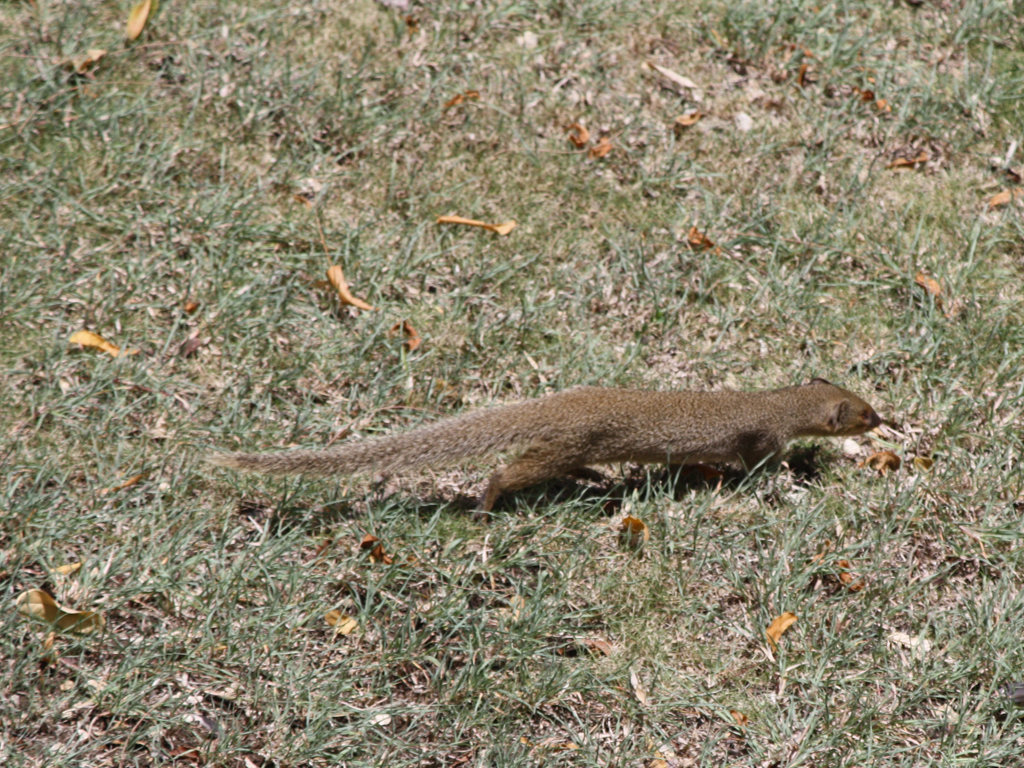
However, I did not expect what happened next...
The blackbird swooped down a few times at the mongoose. Not being the brightest of the 3 in this equation, as I was fumbling with my camera, I suspect the mongoose reacted, as the usual warning signal was interrupted by a choked chirp. Once the Blackbird quickly regained its composure, it continued with its call.
As time has elapsed, I have not heard the call. Perhaps the blackbird was protecting a nest, which is why it was so territorial. They are known to behave aggressively towards
humans as well (like the mongoose, I've had personal experience). |
|
Although their methods of communication are not always clear to us, as I take a closer look at the habits of birds and the other wildlife around me, it is fascinating and interesting to bear witness to and gain a better understanding of how they relate to their environment.
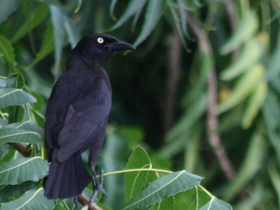
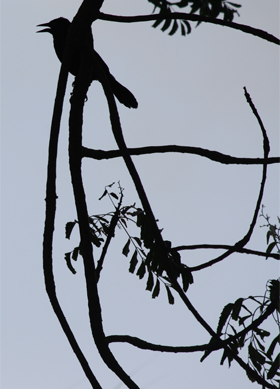
| |
|
|